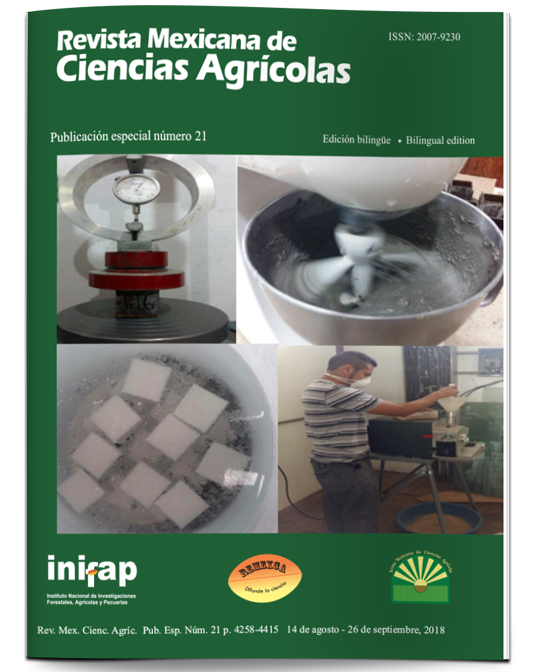Modeling of the grain-shell mixture in a castor-cleaning machine (Ricinus communis L.)
DOI:
https://doi.org/10.29312/remexca.v0i21.1525Keywords:
CFD, grain cleaning, trajectoryAbstract
Currently the cleaning of the grains by means of vacuum is spreading, in the development of agricultural equipment, due to the absence of dust in the work area. A common problem is the accumulation of material in conflicting sectors of the cleaning system, such as in places of sudden changes of direction or section in the tubes. In particular, it is of special interest, the component that distributes the flow, since a correct design must ensure a homogeneous distribution of the flow of air and material, without clogging (accumulations). The objective of this work is to analyze the behavior of the grains and shells of the castor oil plant (Ricinus communis L.) in the cleaning system by means of the computational fluid dynamics (CFD) technique and the trajectory of the particle at the exit of the fan, to determine the proper minimum speed. In the simulation, the k-epsilon and DPM (discrete phase model) models of ANSYS FLUENT were used. A test bench and a metal structure was constructed and instrumented to compare the experimental and computational results. The comparison of the results showed a good qualitative and quantitative agreement (R2= 82%) in the velocity profile. The average speed was 5.98 and 5.09 ms-1 for the estimated and experimental respectively. The standard deviation was 1.85 and 1.63 ms-1 for the estimated and experimental speed respectively. Finally, the model of the trajectory of the particle adequately predicts the distribution of the material at the outlet of the ventilator.
Downloads
Published
How to Cite
Issue
Section
License
The authors who publish in Revista Mexicana de Ciencias Agrícolas accept the following conditions:
In accordance with copyright laws, Revista Mexicana de Ciencias Agrícolas recognizes and respects the authors’ moral right and ownership of property rights which will be transferred to the journal for dissemination in open access. Invariably, all the authors have to sign a letter of transfer of property rights and of originality of the article to Instituto Nacional de Investigaciones Forestales, Agrícolas y Pecuarias (INIFAP) [National Institute of Forestry, Agricultural and Livestock Research]. The author(s) must pay a fee for the reception of articles before proceeding to editorial review.
All the texts published by Revista Mexicana de Ciencias Agrícolas —with no exception— are distributed under a Creative Commons License Attribution-NonCommercial 4.0 International (CC BY-NC 4.0), which allows third parties to use the publication as long as the work’s authorship and its first publication in this journal are mentioned.
The author(s) can enter into independent and additional contractual agreements for the nonexclusive distribution of the version of the article published in Revista Mexicana de Ciencias Agrícolas (for example include it into an institutional repository or publish it in a book) as long as it is clearly and explicitly indicated that the work was published for the first time in Revista Mexicana de Ciencias Agrícolas.
For all the above, the authors shall send the Letter-transfer of Property Rights for the first publication duly filled in and signed by the author(s). This form must be sent as a PDF file to: revista_atm@yahoo.com.mx; cienciasagricola@inifap.gob.mx; remexca2017@gmail.
This work is licensed under a Creative Commons Attribution-Noncommercial 4.0 International license.



